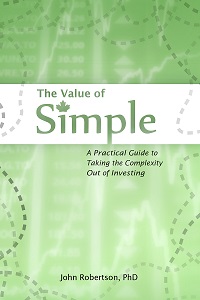Naked Offers, Jumping off Cliffs, and Life’s Surprises
April 30th, 2018 by PotatoI’ve long lamented the use of so-called “clean” offers common in GTA bidding wars, where people bid massive amounts on a property with no conditions to protect themselves. It felt like the boy who cried wolf — for so long I’ve been warning people not to do that because in in the unlikely event something goes wrong, it can blow up very badly — damages in the hundreds of thousands can break a regular family’s finances. Yet for so long the market just kept going up and lending just kept staying loose and people ignored that advice.
Of course, at the end of the story there really is a wolf. And as the white-hot spring 2017 market cooled a bit, we got a few deals that couldn’t close and some court cases making the news. There’s a Reddit thread with hundreds of comments on this story, and at a quick glance most of them seem to be about the fact that there was no financing condition.
“But all the other offers are without conditions.”
Look, this is as close as you can possibly come to that cliche mom advice: if everyone else jumped off a cliff, would you do it too? If you actually need financing to close the deal, then you need a financing clause. If a rich person who doesn’t need financing or a foolish moister with a realtor whispering in their ear is bidding against you with a naked offer, then accept defeat (and subsequent teasing about being a forever-renter basement-dweller) gracefully, rather than jumping off the cliff with the rest of the lemmings.
I can understand that realtors are in a conflicted position, and are more interested in closing a deal than protecting their clients, so they collectively pushed the herd to this madness of unprotected naked offers becoming the standard, something you “had” to do when making an offer. But hopefully people will heed the warning of the judge in this case and stop that nonsense (though a cooling market may stop it naturally as bidding wars die down and people go back to negotiations with one prospect at a time). A part of me hopes the would-be buyers sue their realtor for pushing them to put in a naked offer when the deal was truly contingent on financing, but I suspect in reality it’s more likely the realtor will sue them for the commission lost when the deal fell apart, adding insult to injury.
And as long as I’m ranting and reminding people that there is risk in real estate: financing of a preconstruction is not guaranteed. If you’re not rich enough to have a substantial cushion to close even if the market value at completion is a fair bit below the price you contracted for (which you still have to pay), you’re not rich enough to play in pre-con.
I haven’t really blogged much about the real estate market: the core rent-vs-buy lesson hasn’t changed, and there isn’t much that happens in real-time to talk about. The 30% year-over-year gains of Spring 2017 have cooled, which not many were surprised at, and it will take years to see how it plays out from here. However, while I know that life is hard (very, very hard) to predict and forecast, there are a number of things that have surprised me:
-
1. How fast the turn was, especially in parts of the 905. The market was totally coked-up-banana-pants-insane last spring. Then it wasn’t, and prices started to drop. The Stouffville case at the top of the post is an extreme example, but 10-20% decline in under a year is unheard of. For years when people tried to brush off the US housing bubble experience, one of my main points was that the subprime crisis was mostly an accelerant — even without subprime, we were still vulnerable to a crash, but that it would just happen slower. Instead, Markham is on track to out-crash Pheonix, Miami, and Vegas. Surprise! (Though this one comes with a bit of an asterisk as there was a government intervention in the form of the foreign buyer’s tax).
2. That condos are holding up while detached prices tank. This one can likely be blamed partly on AirBnB, partly on people buying what they can afford after being priced out of detached houses in the frenzy. But that’s a complete surprise from what many who joked about Toronto’s official bird would have expected to see when the market started to turn.
3. How many AirBnB units there are. I mean, Toronto wasn’t exactly lacking in hotel space for tourists from what I know. And the model of renting out a condo as a luxury hotel was, by all reports I’ve seen, a rather famous flop at the buildings designed for it (esp. Trump). Yet there are thousands of units in the city, despite being of questionable legality even before additional rules came out.
I’m sure there will be lots more surprises in the years to come.



 Questrade: use QPass 356624159378948
Questrade: use QPass 356624159378948 Passiv is a tool that can connect to your Questrade account and make it easier to track and rebalance your portfolio, including the ability to make one-click trades.
Passiv is a tool that can connect to your Questrade account and make it easier to track and rebalance your portfolio, including the ability to make one-click trades.